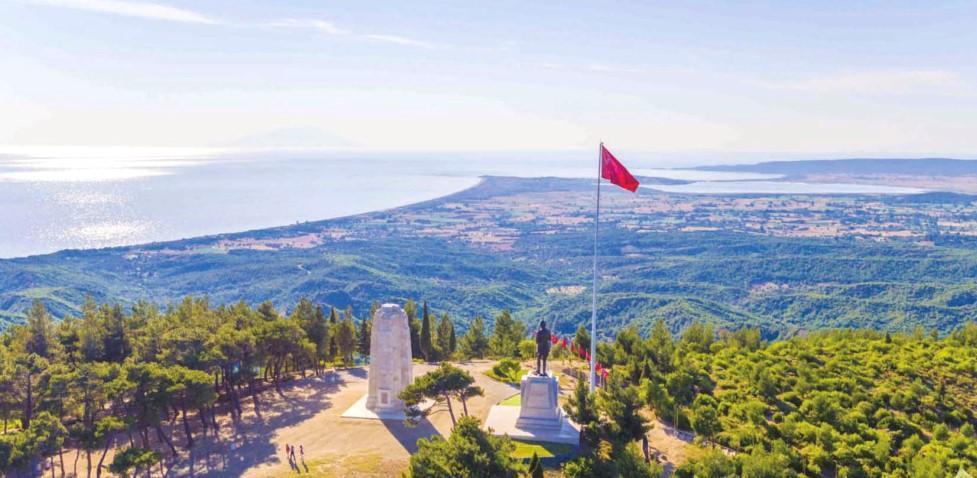
Two historians have found the lost martyrdom of the Çanakkale Battles after examining about 1,000 archival documents.
Although 108 years have passed since the Çanakkale Battles, one of the bloodiest wars in the world, new traces of the war are still coming to light. Çanakkale Onsekiz Mart University (ÇOMÜ) Department of History faculty member Barış Borlat and military history specialist Ömer Arslan examined 1,000 archive documents during their master’s thesis studies.
As a result of the studies, the lost martyrdom of the soldiers who were martyred during the bayonet charge in Conkbayırı, one of the most critically important regions of the battle, was found.
Stating that the most important source for finding the martyrdoms in the area where the battles took place is the map of Şevki Pasha, Borlat said that Şevki Pasha, who came to the region in 1916, transformed the battlefield into a map for fortification purposes, and one of the important sections in 43 plots was the martyrdom areas.
Borlat stressed that however, after a while, they realized only the martyrdom areas in the map of Şevki Pasha were not sufficient or some of them were not included in the map. The martyrdom areas existed independently of the Şevki Pasha map, especially in military documents and sketches of the period.
“In this context, we started to identify many martyrdom areas in the battlefield that we did not know the location of until today, and hundreds of visitors have passed in front of them almost every day,” he said.
Stating that there are also foreign cemeteries in the Conkbayırı region, Borlat added that as Aug. 10 is one of the most important moments in history, it can be said that now the martyrs and burial sites of the Battle of Conkbayırı have also reached the present day and are waiting to be restored from now on.
Pointing out that they identified a sketch while scanning the war reports of the 28th Regiment that served in the region, Arslan said that the sketch showed the place where the regiment was martyred.
“When we superimposed this on today’s aerial image, we identified the exact location. Then we conducted a land survey. We saw skulls, bone fragments, piles of stones in the form of a cemetery and witnesses belonging to many of our martyrs. At the same time, we notified this determination with an application to the Çanakkale Battles Gallipoli Historical Site Presidency. They will evaluate this and carry out the registration and restoration work as a martyrdom.”